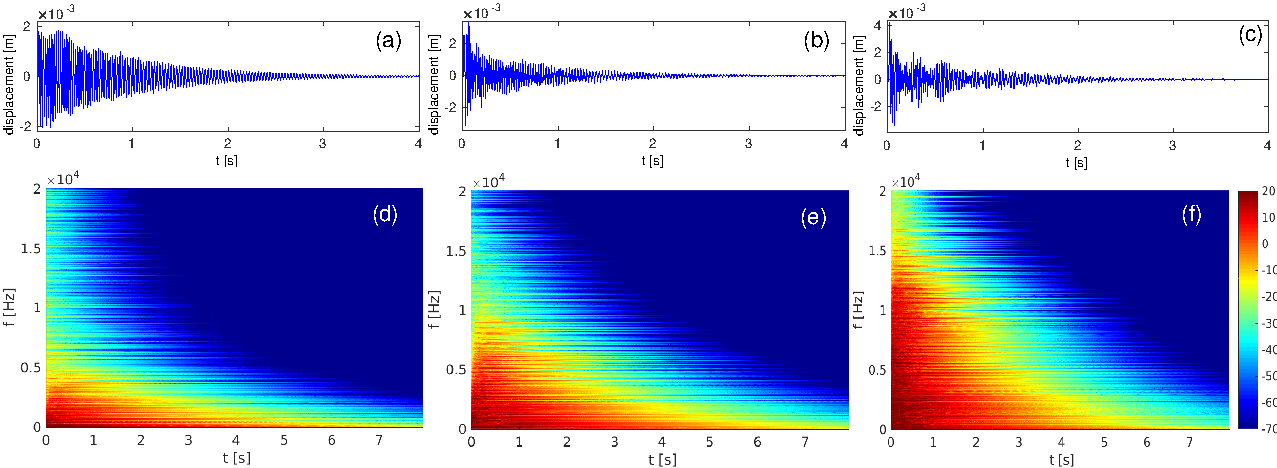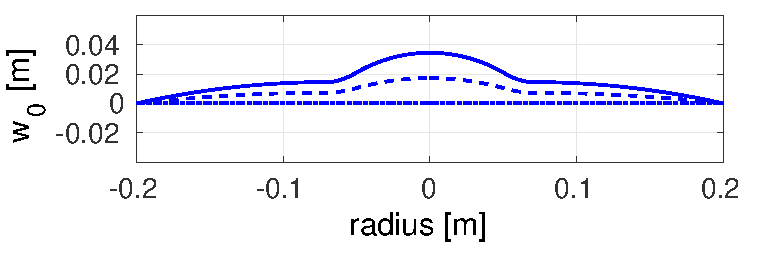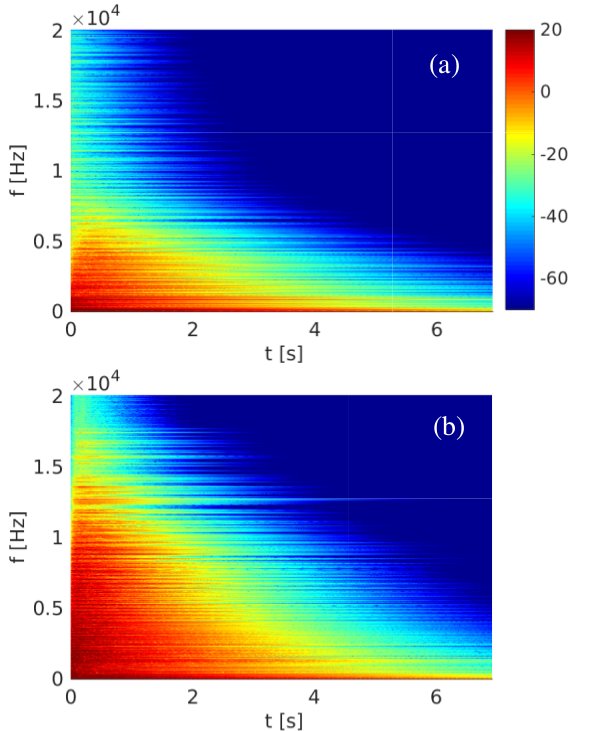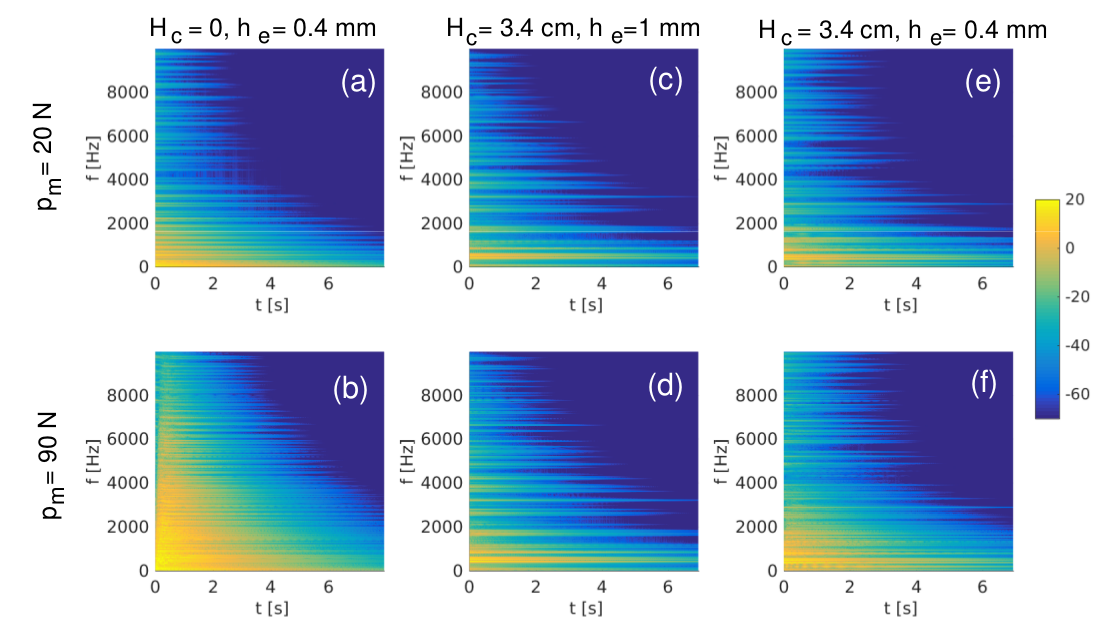Sound synthesis of cymbals including thickness and shape variations
Nonlinear vibrations of thin plates with variable thickness : application to sound synthesis of cymbals,
by Quoc Bao Nguyen and Cyril Touzé,
Journal of the Acoustical Society of America, vol. 145(2), 977-988, 2019.
[JASA]
The main outcome of the paper is to develop a complete model for cymbal vibrations including the taper effect (thickness variation along the radius) together with the bow effect (shape variation), in order to confer the cymbal the ability to play two different tones when being hit strongly on the edge (crash sound) or on the bell (distinct tone to mark rhythm).
Decreasing the thickness at edge
-the thickness is constant for r in [0, 0.05], with value 1 mm
-then the thickness decreases linearly down to the edge,
with a final thickness value he.
Three values of he are selected :
-he = 1 mm (i.e. plate with uniform thickness)
-he = 0.7 mm
-he = 0.4 mm
The plate is excited with a strike of amplitude 90 N. The figure below shows the displacement of one point and the corresponding spectrograms.

Case 1 : plate with uniform thickness h=1mm Case 2 : plate with decreasing thickness down to he = 0.7 mm Case 3 : plate with decreasing thickness down to he = 0.4 mm Case 4 : in order to draw out a more complete comparison, the sound file generated by selecting the case of a plate with uniform and small thickness h=0.4 mm is selected here
A complete model combining shape imperfection and variable thickness

The shape is parameterized by the height at center Hc, selected either at Hc=1.7cm or Hc = 3.4 cm.
The figure below shows the spectrograms of
-cymbal with uniform thickness h = 1 mm, shape variation only with height at centre Hc = 3.4 cm.
-cymbal with the same shape variation, Hc = 3.4 cm, and linear decrease of the thickness down to he = 0.4 mm.
Amplitude of the strike is 90 N.

The corresponding sound files are:
Case 1 : plate with uniform thickness h=1mm, shape variation only, Hc = 3.4 cm Case 2 : shape variation with Hc = 3.4 cm and decreasing thickness down to he = 0.4 mm
Case 1 : only thickness variation down to he = 0.4 mm Case 2 : only shape variation with Hc = 3.4 cm Case 3 : shape and thickness variations with he=0.4 mm and Hc = 3.4 cm
The figure below reproduces Fig. 8 of the paper and shows clearly the different pitch glide with spectrograms restricted to the low-frequency area and limited dB range (50 dB).

-a clear tone with a dominant pitch when hit near the centre, in the region known as the bell.
-a non-tonal, bright glittering sound is awaited when strongly striking crash and splash cymbals at the edge.
The sounds given below, corresponding to Fig. 9 of the paper, exemplifies this by hearing at the sounds generated when a cymbal is struck at center. The following cases are to be heard:
Case (a) : only thickness variation down to he = 0.4 mm, strike at center with amplitude 20 N Case (b) : same as (a) with a more vigorous strike at 90 N Case (c) : only shape variation with Hc = 3.4 cm, strike at center with amplitude 20 N Case (d) : same as (c) with a more vigorous strike at 90 N Case (e) : thickness and shape variation with he=0.4mm and Hc = 3.4 cm, strike at center with amplitude 20 N Case (f) : same as (e) with a more vigorous strike at 90 N
The figure below reproduces Fig. 9 of the paper and showing the spectrograms corresponding to the sounds of cases (a) to (f) explained above

Page created on february 27th, 2019


